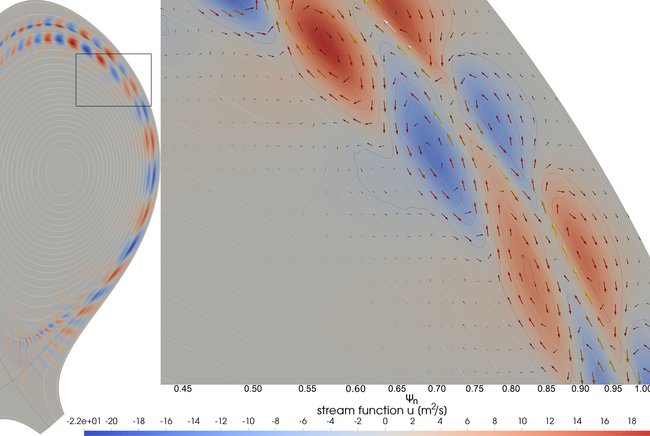Kinetic modelling of ELM-induced tungsten transport in a tokamak plasma

The monthly edition of a leading journal in plasma physics (Physics of Plasmas https://aip.scitation.org/journal/php published by the American Institute of Physics) highlights a study to determine the efficiency of ELMs to exhaust tungsten impurities from the core plasma of tokamaks to ensure that its concentration remains low to avoid plasma collapse by excessive radiation.
The research leading to the highlighted publication “Kinetic modelling of ELM-induced tungsten transport in a tokamak plasma” by Daan van Vugt, Guido Huijsmans, et al., has been carried out under a collaboration between Eindhoven University of Technology and the ITER Organization. This collaboration concerns modelling of tungsten impurity behaviour and of the power fluxes to plasma facing components during controlled ELMs in ITER with advanced modelling by the JOREK code, which has required specific upgrades of this code to include the necessary plasma-wall interaction and impurity transport processes.
The JOREK code has been extended with a model for physical sputtering of impurities, including prompt redeposition and self-sputtering. The sputtered particle paths are followed through the plasma with a kinetic particle tracer, with ionization, recombination and collisions. Radiation from sputtered impurities can be calculated and included as a feedback onto the MHD evolution. The new hybrid MHD-particle simulation code presents a major step forward in the simulation of impurities in plasmas. As a first application the motion of tungsten impurities in the core plasma due to ELMs is investigated.
This publication shows that the role of ELMs in cleaning up the plasma from tungsten eroded at the divertor in ITER can be opposite to that in present experiments, particularly when we approach the conditions required for high fusion energy production gain. This implies that the use of the ELM control coils, included in the ITER baseline design to modify ELM behaviour and eventually suppress ELMs, will be required not only for the control of power fluxes to the divertor but also to exhaust the eroded tungsten from the confined plasma to keep it clean.